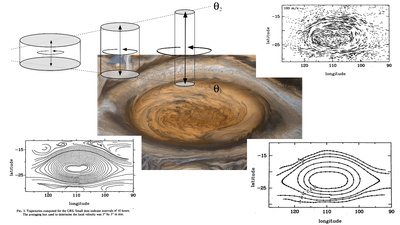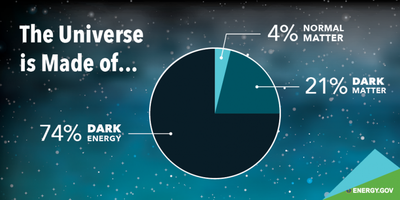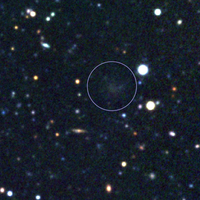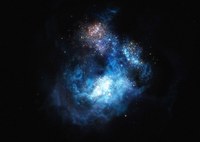PALS - 2018-19
What is Under Jupiter’s Great Red Spot?
| When |
Mar 06, 2019
from 07:00 PM to 08:00 PM |
|---|---|
| Where | Monnik Beer Co., 1036 E Burnett Ave., Louisville, KY 40217 |
| Contact Name | Lutz Haberzettl, Ph.D. |
| Contact Phone | (502)-852-1986 |
| Add event to calendar |
|
Speaker: Timothy Dowling, University of Louisville
 Abstract: The Juno and Cassini proximity orbits of Jupiter and Saturn confirm that the alternating jet streams on these gas giants extend thousands of miles into their dark interiors. The existence of these deep roots was established three decades ago by analysis of Voyager cloud-top wind data, particularly from the circulations around Jupiter’s Great Red Spot (GRS) and White Oval BC. We will discuss the powerful concept of vorticity and explain how it allows us to see underneath these great storms, and will review what Jupiter’s complicated jets tell us about shear stability in general, including a potential new direction for research into the vexing problem of confinement in fusion tokamaks.
Abstract: The Juno and Cassini proximity orbits of Jupiter and Saturn confirm that the alternating jet streams on these gas giants extend thousands of miles into their dark interiors. The existence of these deep roots was established three decades ago by analysis of Voyager cloud-top wind data, particularly from the circulations around Jupiter’s Great Red Spot (GRS) and White Oval BC. We will discuss the powerful concept of vorticity and explain how it allows us to see underneath these great storms, and will review what Jupiter’s complicated jets tell us about shear stability in general, including a potential new direction for research into the vexing problem of confinement in fusion tokamaks.
The Hunt for Dark Matter: What It is, and Why It Matters
| When |
Feb 06, 2019
from 07:00 PM to 08:00 PM |
|---|---|
| Where | Monnik Beer Co., 1036 E Burnett Ave., Louisville, KY 40217 |
| Contact Name | Lutz Haberzettl, Ph.D. |
| Contact Phone | (502)-852-1986 |
| Add event to calendar |
|
Speaker: R.L. Steele
 Abstract: The universe is a mysterious place! Everything we can see--all of the planets, stars, galaxies, dust, and gas that emit electromagnetic radiation--only accounts for about 4% of the total matter in the universe. What is the remaining ~96% of the universe made of? Dark energy and dark matter, we think. Join us for the February edition of PALS & Astronomy on Tap Louisville, where graduate student and dark matter huntress Becky Steele will explain the difference between dark energy and dark matter, why dark matter matters, and what we know (and don't know) about it.
Abstract: The universe is a mysterious place! Everything we can see--all of the planets, stars, galaxies, dust, and gas that emit electromagnetic radiation--only accounts for about 4% of the total matter in the universe. What is the remaining ~96% of the universe made of? Dark energy and dark matter, we think. Join us for the February edition of PALS & Astronomy on Tap Louisville, where graduate student and dark matter huntress Becky Steele will explain the difference between dark energy and dark matter, why dark matter matters, and what we know (and don't know) about it.
Are We Alone
| When |
Jan 09, 2019
from 07:00 PM to 08:00 PM |
|---|---|
| Where | Monnik Beer Co., 1036 E Burnett Ave., Louisville, KY 40217 |
| Contact Name | Lutz Haberzettl, Ph.D. |
| Contact Phone | (502)-852-1986 |
| Add event to calendar |
|
Speaker: James T. Lauroesch, University of Louisville

Abstract: The search for extra-terrestrial life takes many forms. While most people think of SETI (Search for Extra-Terrestrial Intelligence) and intelligent aliens, the search for life also involves looking for simpler forms of life as well as biological precursors here in our own Solar System. The latest missions to explore the Solar System will be discussed as well as the implications of the last 60 years of SETI.
The Low Surface Brightness Universe
| When |
Dec 13, 2018
from 07:00 PM to 08:00 PM |
|---|---|
| Where | Monnik Beer Co., 1036 E Burnett Ave., Louisville, KY 40217 |
| Contact Name | L. Haberzettl, Ph.D. |
| Contact Phone | (502)-852-1986 |
| Add event to calendar |
|
Speaker: Lutz Haberzettl, University of Louisville
 Abstract: Low Surface Brightness (LSB) galaxies are still one of the most mysteries class of galaxies in the Universe. Although they are hard to detect, studies indicate that they are a common product of galaxy evolution processes. LSB galaxies are found in wide range of shapes and sizes. Not all of them are gas poor dwarf galaxies. Objects like Malin 1 are among the largest known galaxies in the Universe, with extended gas-rich disks of up to two to three times the size of our own Milky Way. With this talk, I will present our current understanding about the formation and evolution of these fascinatingly faint objects.
Abstract: Low Surface Brightness (LSB) galaxies are still one of the most mysteries class of galaxies in the Universe. Although they are hard to detect, studies indicate that they are a common product of galaxy evolution processes. LSB galaxies are found in wide range of shapes and sizes. Not all of them are gas poor dwarf galaxies. Objects like Malin 1 are among the largest known galaxies in the Universe, with extended gas-rich disks of up to two to three times the size of our own Milky Way. With this talk, I will present our current understanding about the formation and evolution of these fascinatingly faint objects.
The first galaxies
| When |
Nov 07, 2018
from 07:00 PM to 08:00 PM |
|---|---|
| Where | Monnik Beer Co., 1036 E Burnett Ave., Louisville, KY 40217 |
| Contact Name | L. Haberzettl, Ph.D. |
| Contact Phone | (502)-852-1986 |
| Add event to calendar |
|
Speaker: Benne Holwerda, University of Louisville
 Abstract: At some point between the Big Bang and now, the first lights went on: the first stars and galaxies lit up the Universe. Astronomy is right at the point where we may see the light from these first stars and galaxies thanks to the time-machines that are powerful telescopes. The further we look, the longer it took the light to get to us. The soon-to-be-launched James Webb Space Telescope may just glimpse the very first stars and galaxies as they switch on.
Abstract: At some point between the Big Bang and now, the first lights went on: the first stars and galaxies lit up the Universe. Astronomy is right at the point where we may see the light from these first stars and galaxies thanks to the time-machines that are powerful telescopes. The further we look, the longer it took the light to get to us. The soon-to-be-launched James Webb Space Telescope may just glimpse the very first stars and galaxies as they switch on.
How to Make the Earth Orbit the Sun in 1614
| When |
Sep 05, 2018
from 07:00 PM to 08:00 PM |
|---|---|
| Where | Monnik Beer Co., 1036 E Burnett Ave., Louisville, KY 40217 |
| Contact Name | Lutz Haberzettl, Ph.D. |
| Contact Phone | (502)-852-1986 |
| Add event to calendar |
|
Speaker: Christopher Graney
 Abstract: In 1614, Johann Georg Locher and Christoph Scheiner published, in their book “Mathematical Disquisitions”, a physics to explain how Earth might orbit the sun by means of a continuous falling action. This was decades prior to Newton. This was also despite Locher and Scheiner being geocentrists who were convinced that Earth in fact did not orbit the sun. Their ideas were shot down by colleagues who seem to have not grasped the details of their argument.
Abstract: In 1614, Johann Georg Locher and Christoph Scheiner published, in their book “Mathematical Disquisitions”, a physics to explain how Earth might orbit the sun by means of a continuous falling action. This was decades prior to Newton. This was also despite Locher and Scheiner being geocentrists who were convinced that Earth in fact did not orbit the sun. Their ideas were shot down by colleagues who seem to have not grasped the details of their argument.
